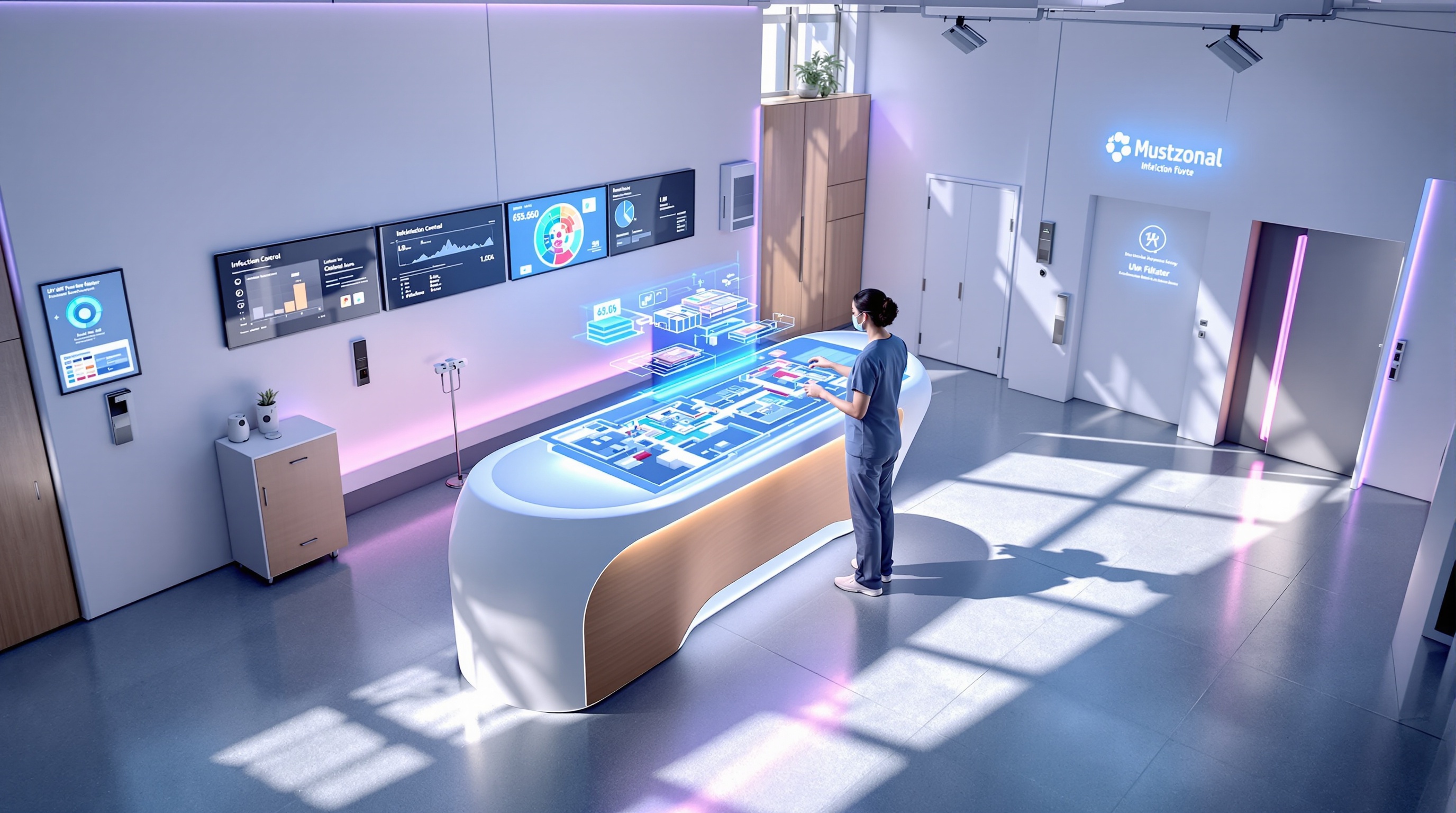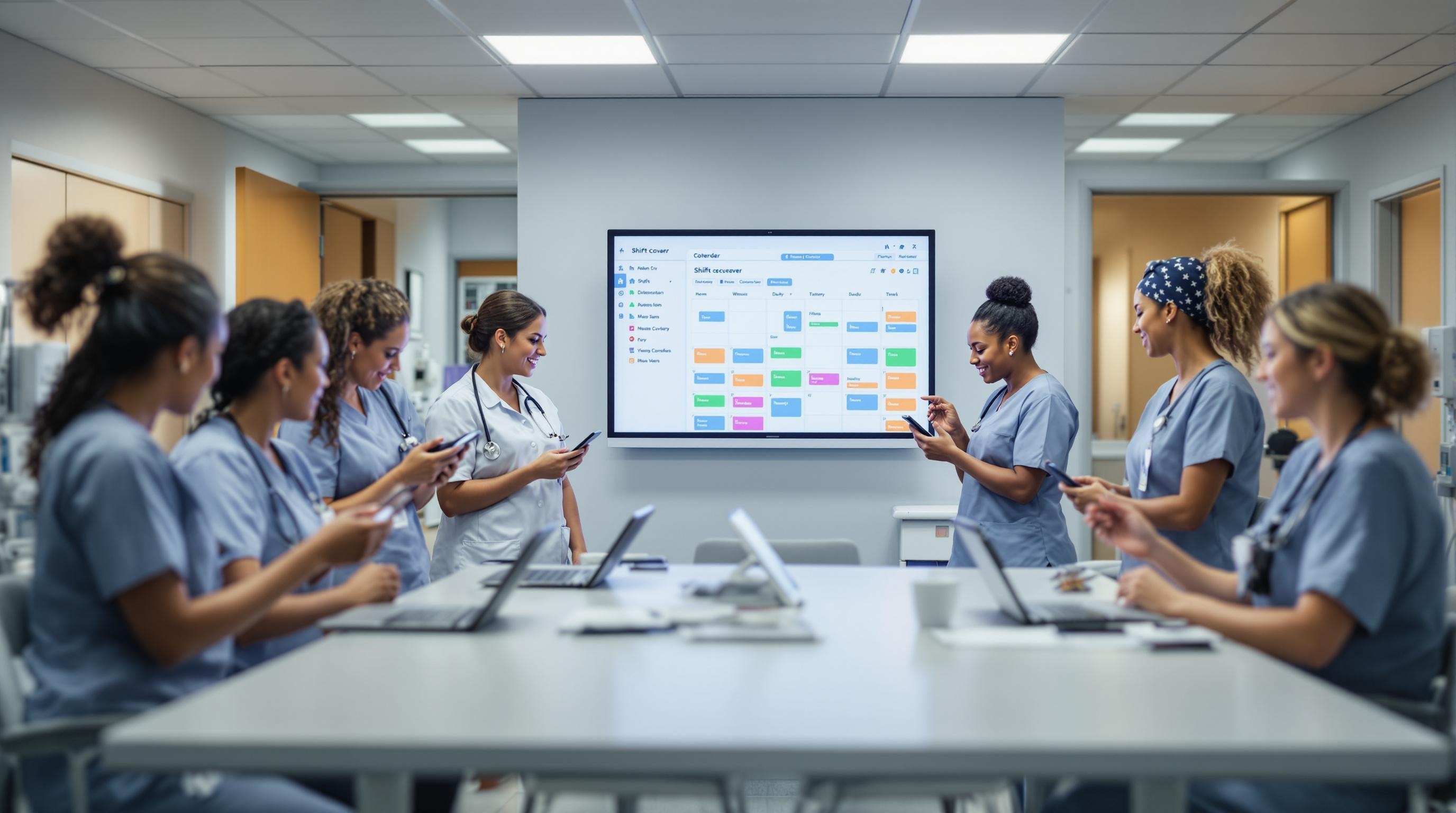Survey Preparation Automation: Streamlining Compliance for SNFs
Discover how survey preparation automation helps skilled nursing facilities save time, reduce errors, and ensure regulatory compliance with ease.
Quick Navigation
- 1. Introduction
- 2. Current Challenges in Survey Preparation Automation
- 3. How Sparkco AI Transforms Survey Preparation Automation
- 4. Measurable Benefits and ROI
- 5. Implementation Best Practices
- 6. Real-World Examples
- 7. The Future of Survey Preparation Automation
- 8. Conclusion & Call to Action
1. Introduction
Skilled nursing facilities (SNFs) are facing a pivotal moment. As of 2025, 45.5% of SNF leaders cite workforce challenges as the top barrier to delivering quality care, according to a recent Skilled Nursing News survey. The sector continues to grapple with staffing shortages, mounting regulatory demands, and the ever-present pressure to provide seamless, high-quality patient outcomes. These challenges are only intensifying: new compliance requirements, value-based purchasing programs, and evolving health policies mean that staff are stretched thinner than ever—often leaving little time for the complex, detail-oriented work of survey preparation.
Traditional methods of preparing for state and federal surveys—manual documentation, last-minute audits, and paper-heavy checklists—are no longer sustainable in this high-pressure environment. Automation has emerged as a critical ally, offering relief from administrative burdens and enabling facilities to focus on what matters most: resident care and compliance excellence. But what does “survey preparation automation” really look like in practice? How does it transform workflow, reduce risk, and empower staff—even in the face of ongoing staffing shortages?
In this article, we’ll explore how automation is reshaping survey readiness in skilled nursing facilities. We’ll examine the latest technologies, key benefits, and real-world outcomes, as well as practical steps for successful implementation. Whether you’re an administrator, compliance officer, or frontline leader, discover how survey preparation automation can be a game-changer for your facility in 2025 and beyond.
2. Current Challenges in Survey Preparation Automation
Automating survey preparation is a growing trend in healthcare operations, promising to reduce manual workloads and streamline compliance processes. However, the journey toward seamless automation is fraught with significant challenges that healthcare facilities must navigate. Below are the most pressing pain points, supported by current research and data, and their broader impact on operations, compliance, and patient care.
-
Resistance to Technological Change Among Staff
Many healthcare staff are already facing unprecedented levels of burnout. Introducing new automation tools, especially for critical survey preparation tasks, can increase stress and resistance. According to a Symplr report, only 30% of healthcare decision-makers believe their workforce will fully embrace new technology without significant disruption, highlighting a low tolerance for change among exhausted staff. -
Data Integration Difficulties
Survey preparation requires pulling data from disparate sources—EHRs, HR systems, incident reports, and more. Inconsistent data formats and siloed systems make integration complex. Over 50% of surveyed healthcare leaders reported challenges with consolidating data for operational tasks, hampering the effectiveness of automation tools (Symplr, 2023). -
Inadequate Customization to Regulatory Changes
Regulatory requirements for surveys frequently evolve. Many automation platforms lack the flexibility to quickly adapt to new standards, risking non-compliance and potential citations during inspections. -
Limited Vendor Support and Training
Effective automation relies not only on technology but also on robust support and training. The Symplr report found that 41% of facilities struggle to secure adequate vendor training, leading to underutilization of automation features and increased frustration among users. -
Cybersecurity and Data Privacy Concerns
Automating sensitive survey data raises the stakes for cybersecurity and HIPAA compliance. Facilities must ensure that automated solutions meet stringent data protection standards, but nearly 35% of decision-makers cite data security as a top concern with new tech deployments (Symplr, 2023). -
High Initial Investment and Uncertain ROI
The upfront cost of implementing automation solutions for survey preparation can be prohibitive, especially for smaller facilities. With limited resources, leaders are cautious—only 37% express confidence that automation will deliver a clear return on investment within the first year. -
Impacts on Operations, Compliance, and Patient Care
These challenges can slow survey readiness, increase the risk of compliance violations, and divert attention from patient-centered care. Operational inefficiency, regulatory penalties, and staff dissatisfaction are common downstream effects when automation is not properly integrated.
As healthcare facilities continue to modernize, overcoming these obstacles is critical. Addressing data integration, workforce engagement, and regulatory adaptability will determine the long-term success of survey preparation automation. For more insights and in-depth statistics, see the full Symplr report.
3. How Sparkco AI Transforms Survey Preparation Automation
Skilled nursing facilities face mounting pressure to deliver flawless compliance during regulatory surveys, all while grappling with ongoing staffing shortages, administrative burdens, and constantly evolving regulations. Sparkco AI brings a transformative solution to these challenges by automating and optimizing survey preparation, enabling facilities to focus on quality care without sacrificing compliance. Here’s how Sparkco AI tackles the most pressing obstacles in survey readiness:
-
Centralized Document Management
Sparkco AI automatically collects, organizes, and updates all required documentation in a secure, cloud-based platform. Instead of staff spending hours tracking down policies, procedures, and training records, everything is instantly accessible and always current. This reduces the risk of incomplete files and ensures surveyors receive exactly what they need—when they need it. -
Automated Compliance Audits
The platform continuously scans records and processes for compliance gaps, using AI-driven checklists tailored to state and federal regulations. This proactive approach flags potential deficiencies before survey day, giving staff clear, actionable insights to address issues early. Facilities benefit from fewer last-minute scrambles and improved survey outcomes. -
Real-Time Task Assignment and Tracking
Sparkco AI automates the delegation of survey-related tasks, sending reminders and tracking progress across teams. Managers can monitor completion rates in real time, ensuring nothing slips through the cracks. This streamlines workflows, reduces staff burnout, and allows teams to focus on resident care instead of administrative follow-ups. -
Automated Reporting and Analytics
With Sparkco AI, facilities can generate comprehensive, survey-ready reports with a single click. The system aggregates data across multiple sources—such as incident reports, training logs, and resident care records—into clear, standardized formats. These analytics not only simplify survey preparation but also provide actionable insights for continuous improvement. -
Regulation Change Alerts
Keeping up with shifting regulations is a persistent challenge. Sparkco AI monitors regulatory updates and automatically adjusts compliance checklists and document requirements. Staff are instantly notified of changes, ensuring ongoing alignment with the latest survey standards. -
Seamless Integration with Existing Systems
Sparkco AI is designed to integrate effortlessly with electronic health records (EHR), HR systems, and other core facility management platforms. This ensures data flows securely and automatically between systems, eliminating manual data entry and reducing the risk of errors.
By automating time-consuming, repetitive survey preparation tasks, Sparkco AI empowers skilled nursing facilities to overcome staffing limitations, reduce administrative stress, and achieve consistent compliance. Its intuitive, integrated platform turns survey readiness from a source of anxiety into a streamlined, manageable process—freeing staff to focus on what matters most: exceptional resident care.
4. Measurable Benefits and ROI
Automating survey preparation can dramatically transform skilled nursing facilities’ operational efficiency, compliance readiness, and bottom line. As regulatory demands increase, leveraging technology to streamline the survey process delivers quantifiable returns on investment (ROI) and measurable benefits. Below, we highlight the key advantages, supported by industry data and real-world results.
- Significant Time Savings: Manual survey preparation can consume 40-60 hours per survey cycle for staff. Automation platforms have been shown to reduce this workload by up to 80%, enabling facilities to reallocate more than 32-48 hours per survey to resident care or other strategic initiatives (PointClickCare).
- Reduction in Labor Costs: By decreasing manual data collection and documentation, facilities report saving an average of $2,500-$4,000 per survey in staff time and overtime costs (American HealthTech).
- Improved Regulatory Compliance: Automation helps maintain up-to-date, centralized documentation. According to a 2023 HealthTech Magazine article, facilities using automated survey tools saw a 35% decrease in compliance-related deficiencies during annual surveys.
- Faster Survey Readiness: Automated systems provide real-time dashboards and alerts, enabling facilities to achieve survey readiness up to 50% faster than manual methods (PointClickCare).
- Enhanced Data Accuracy: Automation reduces human error, with studies showing up to a 90% decrease in documentation errors compared to paper-based processes (AHCA/NCAL).
- Lower Risk of Fines and Penalties: Facilities leveraging automated survey prep have reported a 25% reduction in regulatory fines due to improved documentation and process standardization (HealthTech Magazine).
- Scalable Multi-Facility Compliance: Enterprise-level automation platforms support standardized survey processes across multiple locations, driving up to 40% efficiency gains for multi-facility operators (American HealthTech).
- Boosted Staff Satisfaction & Retention: By reducing administrative burden, staff satisfaction scores improved by 22% in facilities using automated survey solutions, contributing to lower turnover rates (PointClickCare).
In summary, survey preparation automation delivers a robust ROI through quantifiable time and cost savings, improved compliance, and enhanced workforce productivity. For skilled nursing facilities navigating complex regulatory environments, these benefits translate directly to higher quality care and long-term operational sustainability.
5. Implementation Best Practices
Adopting survey preparation automation in your skilled nursing facility can streamline regulatory compliance, reduce errors, and improve readiness for evolving 2025 healthcare standards. To ensure a smooth rollout and lasting success, follow these actionable best practices:
-
Assess Current Processes and Gaps
Start with a comprehensive review of your existing survey preparation workflows. Identify manual steps, frequent bottlenecks, and areas prone to compliance risks.
Tip: Involve frontline staff and compliance officers in mapping workflows.
Pitfall: Overlooking input from daily users can lead to missed pain points.
Change Management: Communicate the purpose of automation early to gain buy-in. -
Define Clear Objectives and Success Metrics
Set measurable goals for automation, such as reducing preparation time, eliminating duplicate data entry, and improving audit accuracy.
Tip: Use SMART goals (Specific, Measurable, Achievable, Relevant, Time-bound).
Pitfall: Vague objectives can stall progress and make ROI hard to prove.
Change Management: Align goals with staff and organizational priorities. -
Select the Right Automation Solution
Choose a platform that integrates with your EHR and compliance systems, offers user-friendly interfaces, and provides robust reporting tools.
Tip: Request demos and reference checks from vendors.
Pitfall: Focusing only on cost can result in poor long-term fit.
Change Management: Involve IT and compliance leads in selection. -
Develop a Detailed Implementation Plan
Establish timelines, assign responsibilities, and outline training needs. Include contingency plans for common disruptions.
Tip: Break the rollout into manageable phases.
Pitfall: Rushing implementation can increase resistance and errors.
Change Management: Set expectations for gradual adoption. -
Train and Empower Staff
Provide hands-on training tailored to different roles. Highlight benefits and address concerns openly.
Tip: Use super-users or champions to support peers.
Pitfall: Skimping on training leads to underutilization and frustration.
Change Management: Foster a culture of learning and feedback. -
Test, Pilot, and Refine Workflows
Run pilot programs with a subset of users. Gather feedback and iteratively refine the process before full deployment.
Tip: Simulate real survey scenarios for testing.
Pitfall: Ignoring pilot feedback can entrench inefficiencies.
Change Management: Celebrate quick wins and improvements. -
Monitor Performance and Compliance Continuously
Track key metrics post-implementation and conduct regular audits to ensure ongoing compliance with 2025 standards.
Tip: Set up dashboards for real-time tracking.
Pitfall: Letting monitoring lapse reduces long-term value.
Change Management: Involve staff in continuous improvement cycles. -
Document and Update Policies Regularly
Keep all automation protocols, user guides, and compliance checklists up to date as regulations evolve.
Tip: Assign ownership for document management.
Pitfall: Outdated documentation can cause compliance failures.
Change Management: Make updates visible and accessible to all staff.
By following these best practices and maintaining a proactive change management approach, your facility can harness the full benefits of survey preparation automation—ensuring ongoing compliance and operational excellence in 2025 and beyond.










